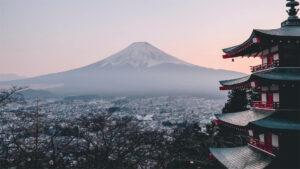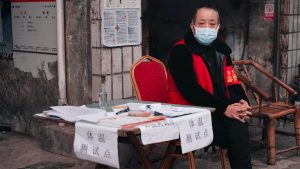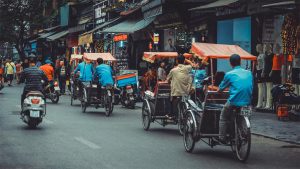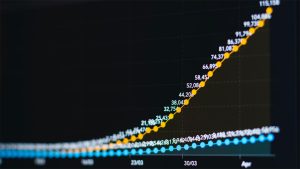You can also read the State of the Pandemic series’ take on the United States, Latin America, the Persian Gulf, East Asia, and the BRICS.
Some good news:
Melissa Taylor (ZoG’s Director of Research) has been tracking the coronavirus epidemic – particularly in East Asia, which was COVID ground zero – with her usual precision and attention to detail. She’s brought us some (mostly) good news! In much of East Asia, the numbers have moved firmly in the right direction. Australia, Malaysia, Taiwan, and New Zealand all look great. Even Asia’s more heavily populated states look impressive.
The news isn’t all sparkling, of course, but the fact remains that on a region-by-region basis, East Asia is firmly in the best position globally.
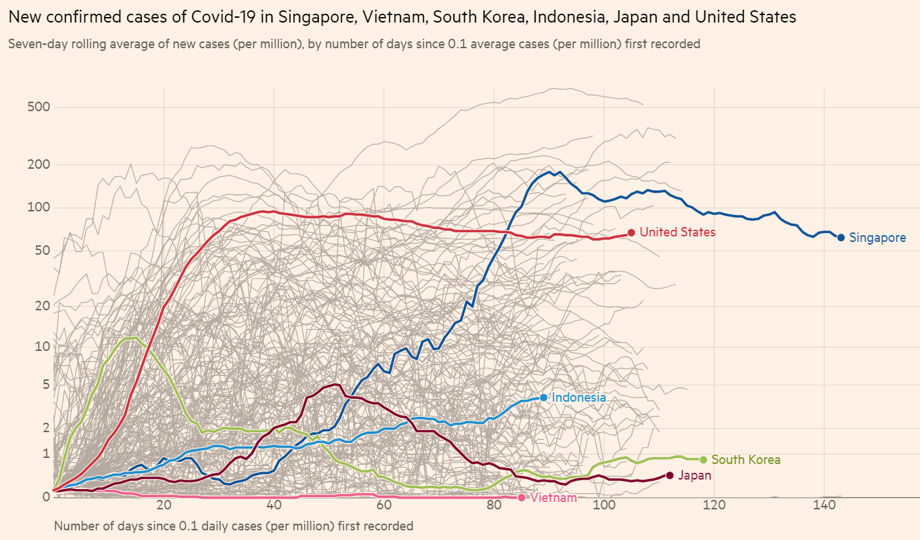
(We continue to be huge fans of the Financial Times for providing the data interface that makes this graphic possible. You can visualize your own data pulls here.)
Now for the details.
Singapore is not a normal place. Roughly five million people are crammed into a single city. It would seem to be the perfect sort of place for the virus to spread. But these are five million highly educated people who appreciate their government’s wildly competent track record for good governance. When the government outlined how to crush the coronavirus, everyone did what they were told.
The government did not blindly make its policies. The Singaporean government understands the central position Singapore holds in global finance, manufactures, and energy trade. Part of that understanding is an acknowledgment that every major power spies on Singapore incessantly. As such, the government maintains a track-and-trace program for foreigners as a matter of course. Retooling the country’s standard counterintelligence programs for coronavirus monitoring was an easy switch that generated outsized results.
For a while.
As mentioned previously, the Singaporean population is highly skilled. But not everybody’s job requires a master’s degree. The country maintains over one million migrant laborers. Sure, some are stockbrokers, but most handle the nuts and bolts of daily urban life: cleaners, drivers, construction workers, and so on. They live in cramped dorms, not corner penthouses.
Singapore’s government is very effective, but effective is not the same as perfect. Simply put, the migrants slipped the government’s collective mind. Nearly three months after Singapore thought it had beat coronavirus, the city-state is suffering the world’s worst secondary epidemic as the virus rages through the country’s support workers.
For a country that borders the pandemic’s ground zero, Vietnam has suffered shockingly little from coronavirus. The country has two things going for it:
First, Vietnam’s fractured geography provides a couple of natural viral firebreaks. The country is shaped like a barbell: Ho Chi Minh is in the far south, Hanoi is in the far north, with a very thin strip of lightly infrastructured land connecting the two. Travel between the two “bells” is thin, so containing any outbreaks within a specific part of the country would be relatively simple.
Second, the Vietnamese government does not mess around. Vietnam is not a democracy. It benefits (suffers?) from extensive monitoring of civilians, but unlike the Singaporean techno-state, Vietnam’s system is more akin to an authoritarian neighborhood watch. This system of internal monitoring literally lets state agents go door-to-door demanding answers to invasive questions.
A bit…fascist? Definitely. But this sort of near-total political command enables the government to stop outbreaks in their tracks, enabling rapid re-openings. Vietnam’s (disturbingly) aggressive tactics stopped COVID in its tracks. Now the country is aggressively seeking gaps in the manufacturing supply chains of other, harder-hit countries for Vietnam to fill.
South Korea earned plaudits early on for their deep, early tracing and quarantine systems, which enabled the country to beat virus cases down to nearly zero without a system-wide lockdown. But the Koreans aren’t perfect.
A singular early case was missed. A woman who went to church triggered a megacluster that took over a month to get under control. While South Korea has mostly reopened, individuals continue to slip through the country’s mesh of testing and tracing. Recently, a bar-hopper triggered dozens of follow-up cases, thus raising concerns of a second wave.
For a wildly wealthy first-world country packed with retirees, Japan has generally received poor reviews for its COVID response. The consensus is that Tokyo downplayed all things coronavirus in an attempt to preserve its hosting of the 2020 Summer Olympics. Only when it became clear that no one was going to show up, and the Olympics were postponed, did the government begin basic anti-COVID measures. There has been no lockdown, and businesses like karaoke bars remained open. Testing was, and remains, thin.
And yet, Japan’s caseloads never rose to mirror those of other late responders. As always, much in Japan remains a mystery, but we know that three things helped:
First, family sizes in Japan are tiny. Most parents have only one child, if that. The interfamily transmission that so characterized outbreaks in Iran and China wasn’t an issue in Japan. Second, while the country normally lives on mass transit, there are small grocery stores in almost every residential building, and everyone has lightspeed internet connections. Self-isolation in Japan is easy, and as regards quarantining, effective.
Third, the Japanese are absolutely, positively, the world’s most intense health freaks. Even before the outbreak, there was a culture of wearing face masks in Japan. All it took was a whiff that there might be a virus scare, and everyone immediately put one on. Everyone. They haven’t taken them off yet. They probably won’t until there’s a vaccine.
We include Indonesia, not because they have a documented case explosion, but because they don’t. We know cases in the capital and largest city of Jakarta have only been going up, but the city is now officially reopening without any meaningful tracing or testing efforts. Much has been (accurately) made of the United States’ insufficient testing; in per capita terms, Indonesia’s testings are less than one-fifteenth what the Americans are doing.
Add in a likely case surge due to Ramadan, and a national government response that can best be described as “in denial.” It’d be a welcome surprise if Indonesia’s infection rate is less than one-tenth of what is officially reported.
It might seem a little weird for a COVID update on East Asia to not include data on China. After all, the coronavirus pandemic began in the country’s Hubei province, in the city of Wuhan. However, we are not including too much analysis of China in this piece for three reasons.
First, Chinese data is at best unreliable, and often wholly fabricated in an attempt to make China look good. Second, the coronavirus outbreak in China is, undeniably, under control.
Yes, we can say the data is unreliable, and also say that China’s outbreak is no longer a big deal. The reason is simple. The Chinese Communist Party now equates COVID cases as being a threat to the CCP’s political power. China treats them with the same panicked fury that they treat the Falun Gong, Hong Kong protestors, or anyone with the audacity to suggest that Taiwan is a country. Reliable data reporting is not part of that fury; anti-viral efforts are. For example, when the Chinese discovered over a hundred cases in a wholesale food market in Beijing this week, they locked down most of the capital metro. Twenty-two million people live there.
So, do we trust China’s data? No, and we’re not bothering to publish it here. But, do we trust the Chinese government to act swiftly to suppress the virus? Totally.
Which brings us to the third reason we don’t have much China in this newsletter: We’re saving it up.
If you enjoy our free newsletters, the team at Zeihan on Geopolitics asks you to consider donating to Feeding America.
The economic lockdowns in the wake of COVID-19 left many without jobs and an additional tens of millions of people, including children, without reliable food. Feeding America works with food manufacturers and suppliers to provide meals for those in need and provides direct support to America’s food banks.
Food pantries are facing declining donations from grocery stores with stretched supply chains. At the same time, they are doing what they can to quickly scale their operations to meet demand. But they need donations – they need cash – to do so now.
Feeding America is a great way to help in difficult times.
The team at Zeihan on Geopolitics thanks you and hopes you continue to enjoy our work.




